
|
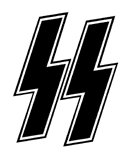
SS Symbol
OTTO SKORZENY'S mission
Skorzeny Rescues Mussolini
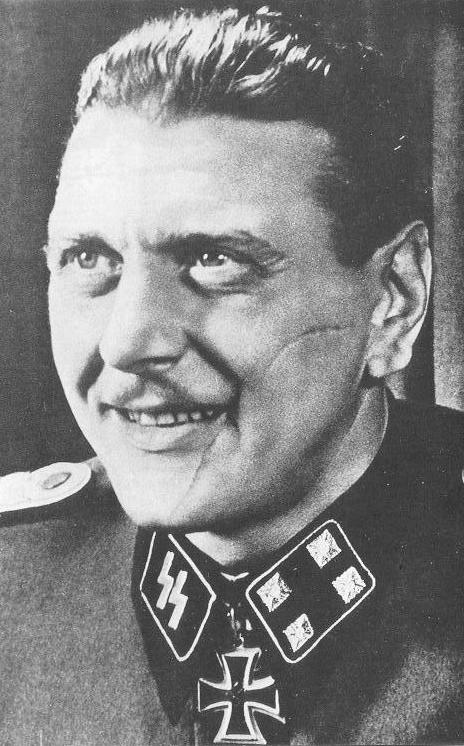
Major Otto Skorzeny, the SS Officer who rescued Mussolini and then went on to lead the special forces of the Third Reich.
The struggle for control of the intelligence services of the Third Reich was between Admiral Canaris and the SS General Heydrich. It was a long battle, but one which the Admiral lost because he lacked the ruthlessness of the SS. Then fate intervened. A cowardly assassination attempt upon Heydrich on 27th May, 1942, succeeded when he died of blood poisoning on 4th June. It would seem that Canaris was once again in control, but the SS did not give in so easily and Himmler, the Reich Leader of the SS, took upon himself the task of leading the Reich Main Security Office. He filled the subordinate posts with his proteges, and all of them worked to accomplish the task which Heydrich had begun -- the unification of the intelligence and counterintelligence systems.
In the summer of 1943 an event occurred which was to produce an SS rival to Canaris, a man who had flair and panache. This SS Officer reaped the harvest of the conflict between the Intelligence And Counterintelligence Agencies Of The High Command Of The Defence Forces and the SD, and went on to become the Leader of most of the special forces raised in Germany during the latter half of the Second World War. The collapse of Fascist Italy, the imprisonment of Mussolini, and the determination of Adolf Hitler to liberate the fallen dictator were the events which set the scene for the arrival on stage of Otto Skorzeny.
|
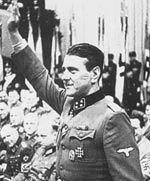
|
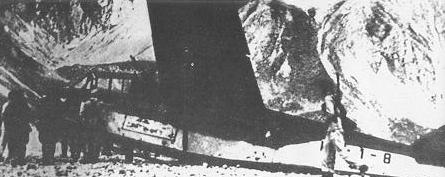
The glider in which Skorzeny flew to the Gran Sasso to rescue Benito Mussolini, the imprisoned Italian Fascist dictator.
|
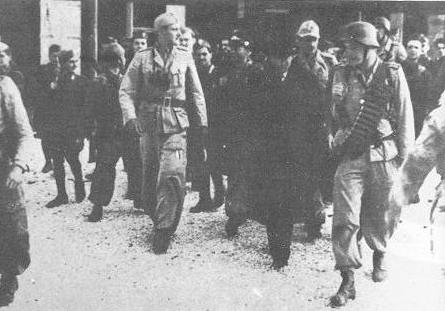
Skorzeny, the burly figure on the left of this photograph, escorts Mussolini from the hotel on the Gran Sasso.
|
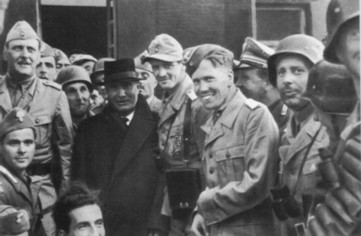
Skorzeny (at the left) and Mussolini together with the German elite forces. Skorzeny reported to Mussolini: "Duce, I was sent by the Führer to rescue you." "I knew my friend would never let me down," Mussolini replied and he embraced Skorzeny.
|
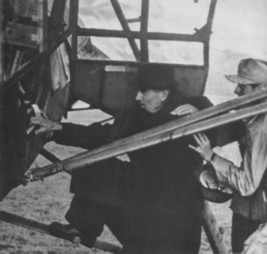
The Fiesler Storch light aeroplane being prepared for the escape flight. Mussolini and Skorzeny are already aboard; Gerlach, the pilot, is about to climb into the machine.Above : A shabby clothed Mussolini is climbing into the little plane. It's hard to recognize the Duce in this man
The danger of a take off from the small meadow was increased when Skorzeny insisted on accompanying the Italian leader and the pilot. The Storch was not really built to carry such a load, and in fact the pilot pointed out this fact, and how short was the runway, but the brave SS Officer was adamant. The men boarded the plane and the engine was revved to produce maximum power. The brake was released suddenly and the Storch shot forward along the boulder strewn runway, careered over the edge of the cliff and vanished from sight. For a few frightening seconds the light plane plunged towards the valley floor, but the pilot regained control and landed at Practica di Mare whence Mussolini, still escorted by Skorzeny, was flown to Hitler's Headquarters.
Skorzeny's first mission as the leader of a commando operation had been a complete success. Although much of the planning had been carried out by the Airforce paratroops, it was the SS who featured in the radio broadcasts and newsreels, and Skorzeny came to be identified in the public mind as architect, planner and executant of the operation. The leaders of the SD were confident that in him they had found the answer to Brandenburg which the SS had been seeking and, furthermore, that any troops which he led would become the German equivalent of the British Commandos. The young SS Major was empowered to raise No. 502 Special Services Battalion, and then had placed under his authority the newly formed 500th Parachute Battalion. It was the beginning of a spectacular career during which Skorzeny formed a number of other special groups. Among these were antipartisan formations to which he gave the name Jagdverbände -- Hunting Bands. The battalion sized Hunting Bands were based in various places in Europe, and each was named for the area in which it worked. Thus there was an Eastern, a Southeastern and a Western Hunting Band. This scheme of Skorzeny's was, in reality, little more than a return to the first principles of Brandenburg, but what Skorzeny's men lacked in language and territorial knowledge they more than made up for in their antipartisan abilities.
Although Skorzeny is associated chiefly with the rescue of Mussolini and with the use of English speaking German soldiers during the Battle Of The Bulge, he was also responsible for keeping the Hungarian Government loyal to Hitler by the simple expedient of capturing the buildings in which the Magyar ministers had their offices. Skorzeny was known as the most dangerous man in Europe.
|
Please feel free to use and download these pictures.
|
|
